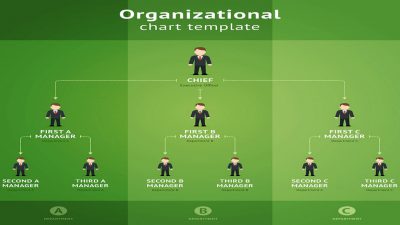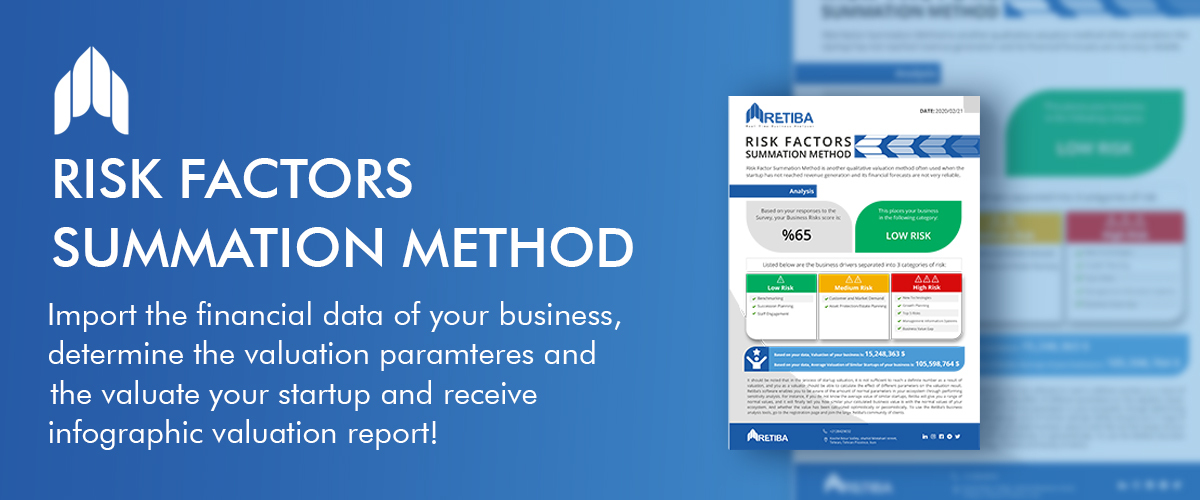In the past, organizational chart was used by the human resources department, managers and newcomers to the company. Usually, the human resources department is responsible for preparing and updating this chart. Today, managers and leaders use organizational charts for a variety of reasons. They use organizational charts to present information and content, analyze scenarios, and make decisions about issues related to individuals and company structure, such as retirement, recruitment, promotion, etc.
Table of Contents
What is an organizational chart?
Organizational chart is a graphical and visual representation of the organization structure. Its purpose is to determine the relationships between the different departments and the workflow. The position of each department and the general chain of issuing and executing orders and decisions are determined to some extent in the organizational chart. The complete organizational chart may even include the name, picture, and occupation of the people in each department, as well as how each person interacts with other people or departments. In this way, taking a glance at the timeline, one can very quickly understand the overall structure and design of the organization, its various levels, hierarchy and position of each person.
What is the use of organizational chart?
Organizational charts are considered as the company’s guidebook and catalog for the newcomers, allowing them to learn about people, their positions, and tasks in the shortest possible time. Normally, when a person enters a new organization, he is faced with a large amount of information, including people’s names and their positions in the first few days, which may take several weeks to understand and remember. The organizational chart will be a great reference for answering newcomers’ questions.
The use of organizational charts is not the same in all companies and organizations. Especially those who use software for designing the organizational chart usually have more flexibility in using it. However, in general, it can be said that the organizational chart is primarily used for newcomers, distance collaboration, increasing employees’ productivity, improving employees’ satisfaction and output, and proper identification of career growth opportunities for employees.
Organizational chart : What is the use of it in companies?
Recruitment of new people for the company
When a new person is added to an organization, the process of adapting to the environment, structure, and culture of the company is usually time-consuming. Going through this process is both costly for the company and very challenging and difficult for the newcomer. Studies show that one of the biggest challenges for a newcomer is gathering information and getting to know colleagues and their occupations. The newcomer usually gets to know dozens of people every day, and this process causes confusion and fatigue. This is while the newcomer usually tries to show his abilities to others from the very first moment. If this person does not identify people correctly and is not aware of their positions, he spends a lot of his energy on attracting the attention of the wrong people; the energy that must actually be allocated to drawing attention to the right path.
Being up-to-date is an important feature of an organizational chart. Therefore, from the very beginning of the arrival of new workforce, the chart changes and shows their position, name and occupation.
Interaction with employees in the form of telecommuting
Work environment in today’s companies is very different from the conditions of a decade ago. In age of digitalization and cyberspace, distance collaboration and telecommuting have become very common. There are many companies that have built their structure based on distance collaboration. These conditions have been naturally intensified with the outbreak of Covid-19. Employees who work remotely are rarely present in the physical space of the organization and most people may never even meet. In this case, the organizational chart is the best way to introduce people, their position, their relationship with each other and awareness of their duties.
In such companies, it is very difficult to maintain effective communication between employees. Especially, if there are no specific restrictions and rules regarding the working hours of employees. In this case, the organizational chart is the best guidebook for each person to communicate with their colleagues. Organizational charts provide photos, names and important information about each person to others, which partially eliminates the problems of absenteeism and distance collaboration.
Increase employees’ productivity
Employees waste many hours a day getting different information about different people in the company. Finding the right person to pursue an issue in large corporations is a time-consuming process. If all employees experience such a situation, it can be said that the company loses hundreds of hours or thousands of dollars a week due to wasting time and energy in the company. In one study, the time lost by each person to find information about other people in the organization during the week was estimated 2.5 hours.
Increase employees’ satisfaction and productivity
Studies have shown that employees’ interaction with each other and their wellbeing are what make employees happy and deeply satisfied, not their salaries. In fact, despite the large number of employees in the organization, most of them still experience loneliness and isolation. This is probably why surveys show that 70% of employees consider having a friend at work to be one of the most important elements of job satisfaction. Organizational charts, especially if presented in the form of software or with a space for constant communication between employees (such as social networks) can well provide the necessary ground for closer cooperation of people, because the role and position of people are specified in it, and various information and details are presented about them.
Identification of promotion opportunities for employees
Growth and promotion is among the factors that makes employees feel satisfied and happy. An organizational chart can identify the skills required for any job or any part of the organization. In this way, employees are well aware of their strengths and weaknesses and can find new opportunities for their skills. This allows all employees to use their talents and abilities at work. Of course, at first place, recognizing these situations, necessary skills, and strengths and weaknesses require effective communication of different departments of the organization and employees with each other. In fact, this goal is achieved when every person in the organization is well aware of the duties and skills they should have. In addition, each organization needs to determine the path to acquire new skills and in return the potential benefits and progress.
Challenges of creating an effective organizational chart
One of the main challenges in achieving a complete and accurate organizational chart is regular updating and constant monitoring. In this way, human resources department must constantly monitor the changes in the organization and structure in order to implement them in the chart in the shortest possible time. This issue gains more importance when the working style of the organization has made it possible to increase or decrease the representatives and branches. In such an environment, if the organizational chart is not up-to-date, it practically loses all its functions. Another common problem is choosing the best way to present the company’s structure and information. Of course, the manner of presentation is highly dependent on the company’s structure. For example, companies that have a modern, non-traditional structure and allow employees to participate in different projects and situations and form groups need a different way of presenting their organizational information.
Fortunately, organizational charts have also evolved with the advancement of technology and the evolution of corporate structure. There are now a variety of software and formats designed to provide information that has facilitated chart design more than before.









